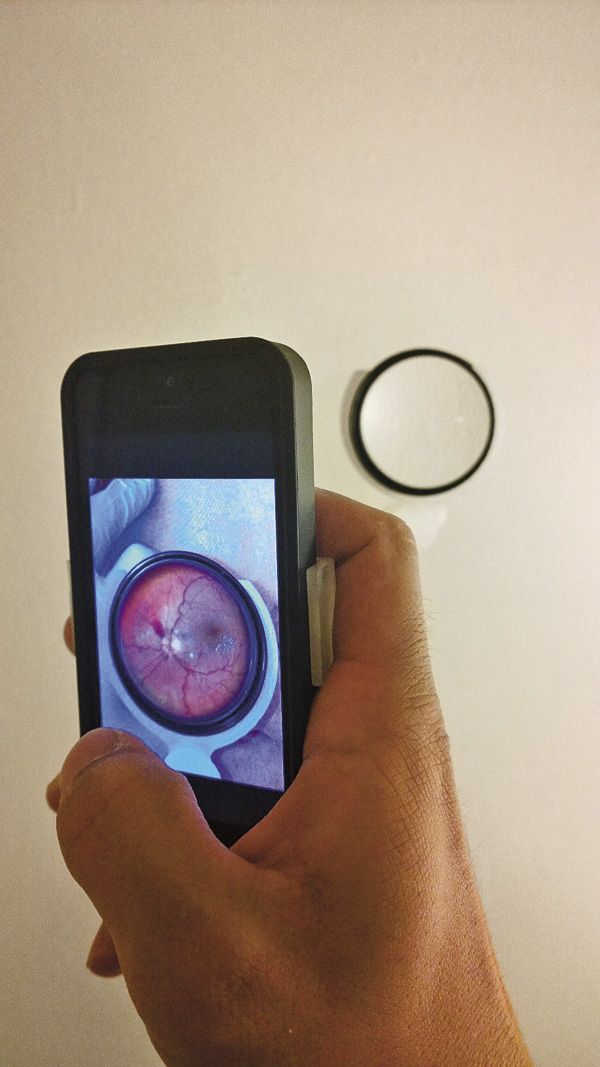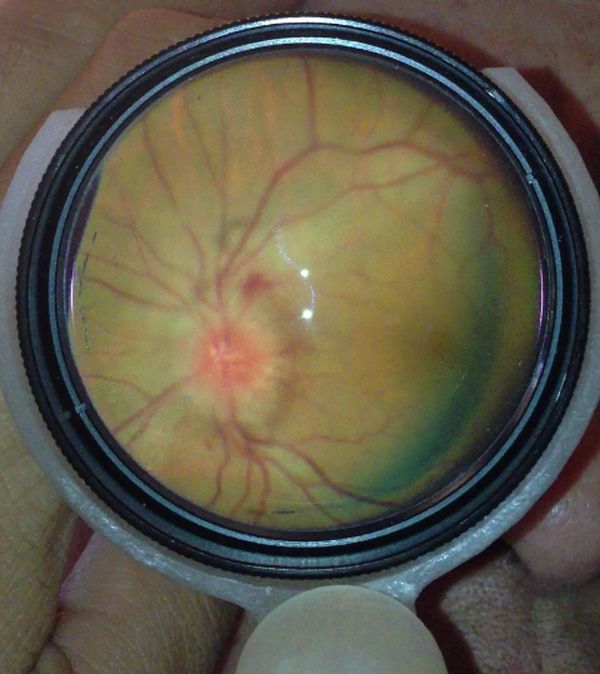Article
Smartphone photography to accelerate age of telemedicine
Physicians are taking pictures of eye problems with their personal smartphone, and smartphones are expected to have a tremendous impact in expanding telemedicine, reports Robert T. Chang, MD. However, while smartphone cameras may function well for pictures of the external eye, they lack the proper magnification and lighting to provide the necessary detail when capturing intraocular images. New adapters are addressing those limitations to enable smartphone fundus photography and acquisition of other high quality anterior segment images.
By Cheryl Guttman Krader
Physicians are already taking pictures of eye problems with their personal smartphone, and this efficient method of communicating is expected to have a tremendous impact in expanding telemedicine in the future, said Robert T. Chang, MD.
“A picture is worth a thousand words, and there are many situations where the opportunity for triage or consultation, via tele-ophthalmology, would be valuable both in the developing and developed world,” said Dr. Chang, assistant professor of ophthalmology, Byers Eye Institute, Stanford University, Stanford, CA.

Use of a simple smartphone adapter allows a physician to facilitate fast, easy-to-use image acquisition of the retina in a dilated patient.
“However, while modern smartphone cameras may function well for taking good pictures of the external eye, they currently lack the proper magnification and lighting to provide the necessary detail when capturing intraocular images without an attachment. New adapters are addressing those limitations to enable smartphone fundus photography and acquisition of other high quality anterior segment images,” Dr. Chang added.
“However, while modern smartphone cameras may function well for taking good pictures of the external eye, they currently lack the proper magnification and lighting to provide the necessary detail when capturing intraocular images without an attachment. New adapters are addressing those limitations to enable smartphone fundus photography and acquisition of other high quality anterior segment images,” Dr. Chang added.
In two recently published articles in the Journal of Mobile Technology in Medicine, Volume 3, Issue 1 (http://www.journalmtm.com/2014/volume-3-issue-1/), Dr. Chang, with co-authors David Myung, MD, Lisa (Lingmin) He, MD, and Mark Blumenkranz, MD, describes the development and usage of an inexpensive, simple smartphone adapter that physically couples an indirect ophthalmoscopy lens to a smartphone to facilitate fast, easy-to-use image acquisition of the retina in a dilated patient.
First described use
Haddock and colleagues at the Massachusetts Eye and Ear Infirmary, Boston, first described the use of an inexpensive app (Filmic Pro 3.5.1) that enables individualized focus control and optimized lighting [J Ophthalmol. 2013;Epub 2013 Sep 19] and used it to take fundus photographs through a handheld 20 D lens aligned manually in front of a smartphone.

An adapter placed on a smartphone is used to photograph the anterior segment of the eye.
The Stanford engineering team of Jais, Myung, and Chang initially used Filmic Pro to demonstrate proof of concept that their hardware adapter eliminates the challenge of indirect ophthalmoscopy, while manually trying to align the lens and phone using one in each hand. They are currently testing the latest versions, prototyped on 3D printers, and will feature an external, variable-intensity, co-axial LED light source to enable the adapter to be used with any camera app, including a smartphone’s stock camera, and not just Filmic Pro.
This advance allows users to take fundus photographs with camera and lens in one hand, similar to performing indirect ophthalmoscopy without needing an extra hand.
Currently, the adapter is used in tandem with a secure mobile app with even the most basic camera functionality, such as EPIC Haiku, which securely uploads the images directly to a patient’s electronic health record. The prototype system, dubbed EyeGo, features separate custom adapters for anterior and posterior photography, but the eventual goal is a single modular setup coupled with a secure upload and data storage app accessible via the internet cloud.
Simple, inexpensive, sleek
“Our most important aims are to make an adapter that is simple to operate, inexpensive, and sleek so that it will fit easily into a coat pocket as well as to streamline the entire picture-taking process so that it would be easy for any ancillary healthcare provider,” Dr. Chang explained.
“Our motto for this system is ‘enabling eye care everywhere’,” he said, adding that a future step is to develop machine-learning algorithms from the acquired images.

An adapter placed on a smartphone is used with a lens to photograph the poster segment of the eye.
Dr. Chang noted that some non-mydriatic cameras are now available as telehealth automated platforms. Non-physicians can operate these devices to acquire high-quality fundus photographs without any need for pupil dilation.
However, access to those cameras, particularly in developing countries, may be limited by the relatively high cost of both the equipment and the reading center.
“We hope that our smartphone-based system will be a less expensive alternative with staff acquiring images to be reviewed by physicians and maybe even automated triage capabilities in the future,” he said.
A study is now underway at Stanford to investigate the usefulness and quality of remote triage, based on images taken with personal smartphones and the EyeGo adapter. An example would be: a patient with a red eye comes into the emergency department, the triage nurse screens the patient, checks the vision, and takes a photo with a smartphone.
The remote ophthalmologist on-call reviews the image and talks to the staff to make a determination of who needs to be seen urgently or whether the patient can be scheduled for follow-up in the eye clinic later, thereby saving cost and significantly reducing wait time.
Dr. Chang also noted that multiple methods have been developed for taking high-quality photographs at the slit-lamp with a smartphone camera attached to an ocular. They range from do-it-yourself approaches to the use of various commercially available lenses or adapters for specific slit-lamp models, with price points currently ranging from $80 to $300. However, this method still requires skillful control of a slit lamp.
Connectivity, expanded integration
Looking ahead, Dr. Chang anticipates patients seeking direct connectivity to physicians and expanded integration of simple-to-use imaging technologies distributed via 24-hour, walk-in “health stations” found in existing retail pharmacies. The mobile platform and data aggregation will play an important role in the future of healthcare decision-making and delivery.

An image of the anterior segment photographed with a smartphone.
However, increasing popularity of telemedicine introduces two new issues:

An image of the posterior segment photographed with a smartphone. (Photos courtesy of Robert T. Chang, MD)
“Privacy and security issues accompanying electronic transfer of the photos are currently being handled by many companies developing technology for encrypted, HIPAA-compliant image sharing.” Dr. Chang said.
Two such app developers include Medigram and Doximity. “The business model for telehealth diagnosis and monitoring has yet to mature, but the advances in smartphones and sensor capabilities combined with the expansion of speedy mobile telephone networks and inexpensive cloud services is definitely moving us in the direction of remote care for all kinds of medical conditions.”
Newsletter
Don’t miss out—get Ophthalmology Times updates on the latest clinical advancements and expert interviews, straight to your inbox.




